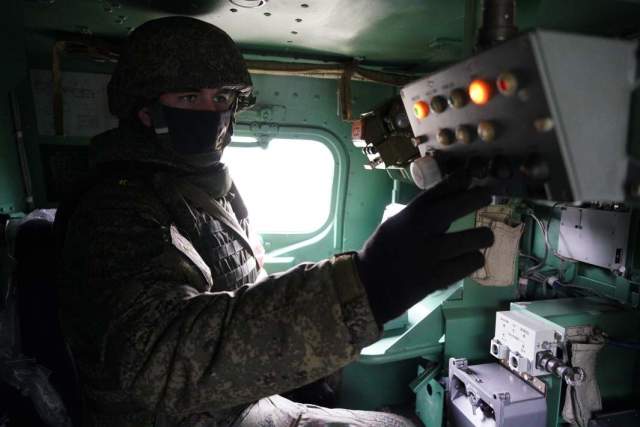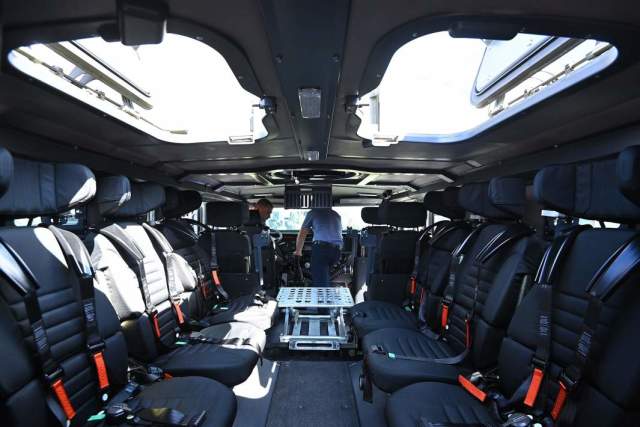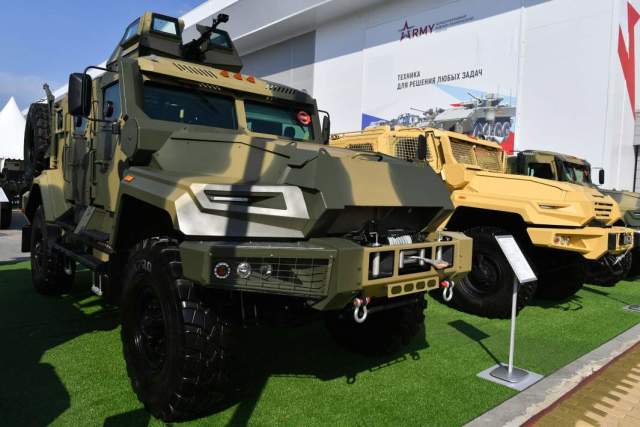Tractors capable of withstanding drone attack will be developed for artillery systems
In the near future, Russian artillery will be transported only by vehicles with an armored cabin and additional protection. Their development has already begun, sources in the Russian Defense Ministry told Izvestia. Multiple rocket launchers (MLRS), including ultra-long-range ones, will also be transplanted to armored vehicles. The armor should protect the crews from artillery fire and drone strikes, and the decision itself was made based on the experience of conducting a special operation in Ukraine, experts noted.
To protect the gunners
The Russian Defense Ministry plans to strengthen the protection of artillery systems. A decision has already been made to adopt new armored tractor vehicles, as well as armored bases for multiple rocket launchers, sources told Izvestia in the military department. The new carriers must protect not only from enemy artillery fire, but also from strikes by various drones. According to the interlocutors of the publication, tactical and technical requirements have already been prepared and experimental work has even begun.
It is expected that the long-range multiple launch rocket systems Tornado-S and Smerch will also receive an armored base.

Photo: IZVESTIA/Kristina Kormilitsyna
Image source: iz.ru
Currently, armored trucks "KamAZ-Bear" and "Tornado-U" are already in service with the Armed Forces of the Russian Federation. But now their nomenclature will be expanded. In particular, armored "wheels" should receive calculations of howitzers D-20 and 2A36 "Hyacinth", as well as 82 mm and 120 mm mortars.
— First of all, it is necessary to protect the vehicles of MLRS systems, especially "Grad" and "Hurricane", — military expert Viktor Murakhovsky told Izvestia. — They are in the range of artillery, which is subordinate to tactical—level complexes. The issue with long-range Tornado—S vehicles is not so acute - they operate beyond the tactical level. Unarmored tractors use D-30, Msta-B and our other guns of different calibers, which belong to the tactical zone. Naturally, they are attacked by drones and FPV drones, which observe them in real time and can destroy them. Armored vehicles also won't help much against a direct hit from an FPV drone or an artillery shell. But they will protect against splinters. You still need to book. The fighting has shown the need to increase security.
Traditionally, rocket artillery is built on a wheelbase, and these cars were not equipped with additional protection systems. It was assumed that MLRS arrive at firing positions, strike and immediately leave them without coming under return fire. MLRS "Grad" are built on the chassis of the Ural car. More powerful "Hurricanes" use the ZIL-135LM wheelbase, and the most long-range "Tornadoes" are mounted on the basis of a four-axle MAZ-543M car.
However, the development of unmanned systems has made its own adjustments. Systems of protection against shock drones appeared first on armored vehicles, after which it was necessary to strengthen the automotive equipment.
Taking into account combat experience
During the special military operation, Russian enterprises have developed and launched the production of new armored vehicles. They were first presented at the parade on May 9 this year. Z-STS "Akhmat" was created taking into account the experience of combat operations. The designers had to develop an inexpensive, as simple as possible in production, but maneuverable and protected vehicle for transporting military personnel in the shortest possible time. They coped with this task in 25 days. For example, seven to ten times less time is spent on the production of the Akhmat than on the creation of armored vehicles of the Typhoon family.

Salon of the armored car "Akhmat"
Image source: Photo: RIA Novosti/Evgeny Odinokov
"Akhmat" is made on a three-axle all-wheel drive chassis "KamAZ-5350" with a wheel formula of 6X6. It has good cross-country ability and is reliable during operation. The main feature is the absence of a load—bearing body that is difficult to manufacture. The armored capsule, which can accommodate 10 military personnel, is mounted on the frame.
The machine is designed for operation in the most extreme conditions, withstands temperatures from -50 to +50 ° C even in mountainous areas at an altitude of up to 4.5 thousand m. In addition, it is adapted for transporting the wounded: stretchers can be placed inside. The machine is assembled on a serial frame using domestic components with a "superstructure" similar in protection class to Typhoon machines.
Another machine developed taking into account the experience of combat operations is the AMN—590951 Spartak. It is built on a two-axle chassis and is designed to carry nine servicemen in full combat gear.
The turret of the car is equipped with a 12.7 mm machine gun "Cord". The fighter has a circular armor protection. Additional windows made of armored glass provide him with a good overview and timely detection of the enemy. The front and side surfaces, including glass, are able to withstand the impact of armor-piercing incendiary bullets.

Armored multi-purpose vehicle 590951
Image source: Photo: RIA Novosti/Mikhail Voskresensky
The bottom protects the crew from detonation of explosive devices under the wheel up to 6 kg in TNT equivalent. The car can accelerate up to 100 km/h.
Recently, a version of the Tornado-G MLRS (further modernization of the Grad) was presented on the basis of an elongated three-axle version of the Spartak armored car. This is the first development designed to protect the calculation of the reactive system from bullets and shrapnel.
Roman Kretsul
Alexey Ramm

